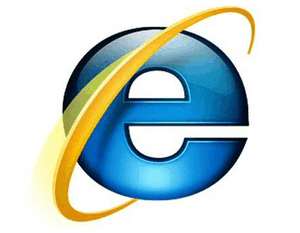| IE10 Available for Windows 7 At Last! |
| Written by Mike James | |||
| Thursday, 28 February 2013 | |||
|
IE10 has been the standard browser in Windows 8 since it launched, but the Windows 7 version has only just been released. Why has it taken so long? IE has never looked more isolated. Until now its latest version IE10 has only run under Windows 8 and given how many people are still using Windows 7, let alone earlier versions, this has to be seen as a restricted market. Since Windows 8 desktop isn't significantly different from Windows 7 desktop you might be forgiven for wondering why it has taken so long to get a Windows 7 version? You might even think that the fact that it did take so long is a matter of really poor planning on Microsoft's part. Or is it that the code bases are so different, that it has taken a year from the initial showing of IE10 to create the Windows 7 version and nearly five months from the Windows 8 version?
It is difficult to say what has caused the delay, but the basic specification of IE10 is much the same under Windows 7. Compared to IE9 it is a desirable upgrade in the sense that it is faster and supports more modern standards - HTML5 and CSS3 - but most programmers have got over the early hype of HTML5. The specific improvements listed on the IE Blog are:
It also claims to be "20% faster on real world web sites", i.e. not necessarily on benchmarks. The reasons for the speed increase are improvements to the JavaScript engine and page load times. It has support for touch input. but given that IE10 only runs under Windows there are fewer opportunities to actually make use of this. In addition many of the touch features have been disabled. To allow you to detect these differences the UA string under Windows 7 doesn't include the "touch" token. The older MS versions of the pointer and gesture events have been removed. Similarly the ms prefixed CSS properties have also been removed. In this sense, the Windows 7 version of IE10 is a later model without the experimental features included in the Windows 8 version. There are lots of comments from developers on the various Microsoft blogs, and many ask why it has taken nearly a year to release the Windows 7 version. One possible reason is that Microsoft tends to use browser versions to drive users to newer versions of the operating system. This is the reason that Firefox and Google support Windows back as far as XP with their latest versions, but Microsoft only supported Windows 8 with IE10 and now, after nearly a year, Windows 7. If you can't get IE10 for XP then this is another reason to upgrade your operating system. Could it be that Microsoft dragged its feet in an attempt to make Windows 8 look more attractive? Other reactions to IE point out repeatedly that its lack of support for WebGL is a growing problem. Once again Microsoft has good commercial reasons for not supporting a 3D graphics system that is an alternative to its own Direct3D. Are such considerations real or just part of the conspiracy theory meme? Can you find a better explanation for the fact that Chrome and Firefox run on Windows 8/7/Vista and XP(SP3) but IE 10 only runs on Windows 8 and now Windows 7? It is difficult to find a technical reason that couldn't have been avoided by wanting to support the earlier versions of Windows. At the moment you have to download and install IE10 manually - and it requires a system restart - but in a few weeks it will be part of the auto-update. More InformationRelated ArticlesMicrosoft no WebGL support - it's insecure IE The Browser You Loved To Hate Contre Jour - A Touch Demo Game For IE10? Why Do We Tolerate IE? Just Say No
To be informed about new articles on I Programmer, install the I Programmer Toolbar, subscribe to the RSS feed, follow us on, Twitter, Facebook, Google+ or Linkedin, or sign up for our weekly newsletter.
Comments
or email your comment to: comments@i-programmer.info
|
|||
| Last Updated ( Thursday, 28 February 2013 ) |


